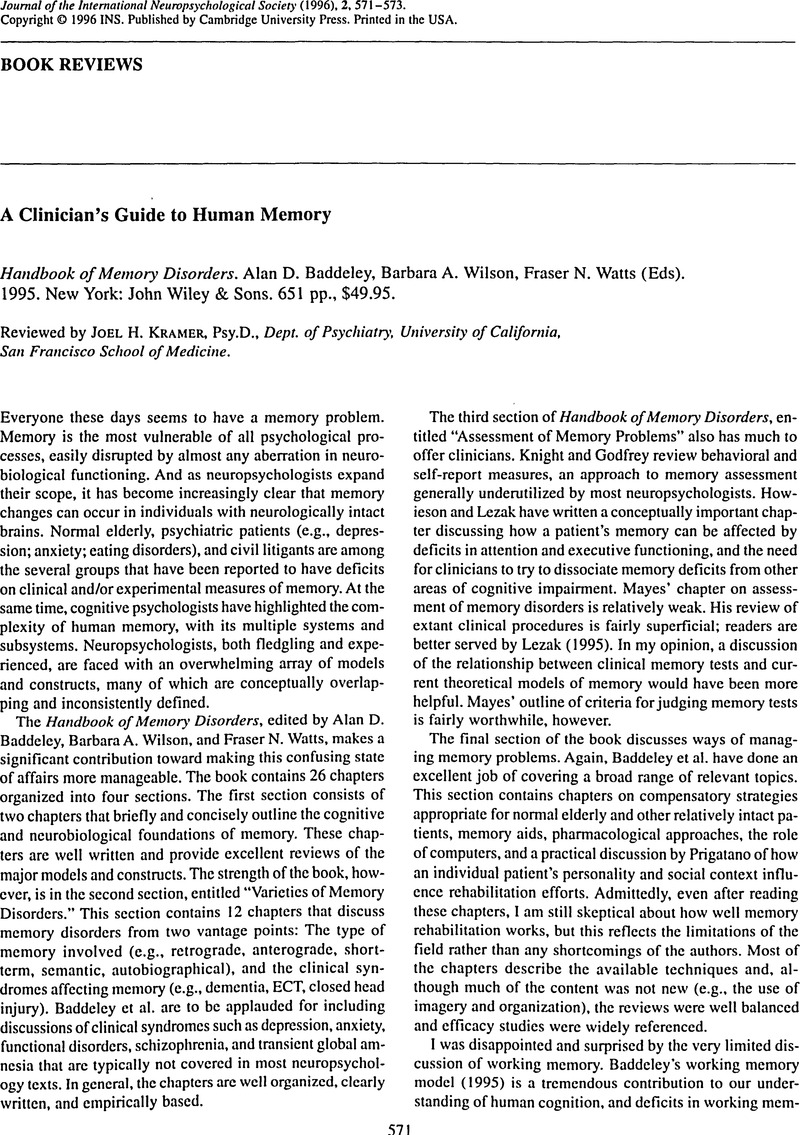No CrossRef data available.
Article contents
A Clinician's Guide to Human Memory - Handbook of Memory Disorders. Alan D. Baddeley, Barbara A. Wilson, Fraser N. Watts (Eds). 1995. New York: John Wiley & Sons. 651 pp., $49.95.
Review products
Handbook of Memory Disorders. Alan D. Baddeley, Barbara A. Wilson, Fraser N. Watts (Eds). 1995. New York: John Wiley & Sons. 651 pp., $49.95.
Published online by Cambridge University Press: 26 February 2009
Abstract
An abstract is not available for this content so a preview has been provided. Please use the Get access link above for information on how to access this content.

- Type
- Book Reviews
- Information
- Journal of the International Neuropsychological Society , Volume 2 , Issue 6 , November 1996 , pp. 571 - 572
- Copyright
- Copyright © The International Neuropsychological Society 1996
References
REFERENCES
Baddeley, A. (1995). Working memory. In Gazzaniga, M.S (Ed.), The cognitive neurosciences (pp. 755–764). Cambridge, MA:MIT Press.Google Scholar
Fletcher, J.M. (1985). Memory for verbal and nonverbal stimuli in learning disability subgroups: Analysis by selective reminding. Journal of Experimental Child Psychology, 40, 244–259.CrossRefGoogle ScholarPubMed
Lezak, M.D. (1995). Neuropsychological assessment (3rd ed.). New York:Oxford University Press.Google Scholar
Rourke, B.P. (1985). Neuropsychology of learning disabilities. Essentials of subtype analysis. New York:Guilford Press.Google Scholar
Siegel, L.S. (1994). Working memory and reading: A life-span perspective. International Journal of Behavioral Development, 17, 109–124CrossRefGoogle Scholar
Swanson, H.L. (1993). Working memory in learning disability subgroups. Journal of Experimental Child Psychology, 56, 87–114.CrossRefGoogle ScholarPubMed
Swanson, H.L. (1994a). Short-term memory and working memory: Do both contribute to our understanding of academic achievement in children and adults with learning disabilities? Journal of Learning Disabilities, 27, 34–50.CrossRefGoogle ScholarPubMed
Swanson, H.L. (1994b). The role of working memory and dynamic assessment in the classification of children with learning disabilities. Learning Disabilities Research 190–202.Google Scholar


